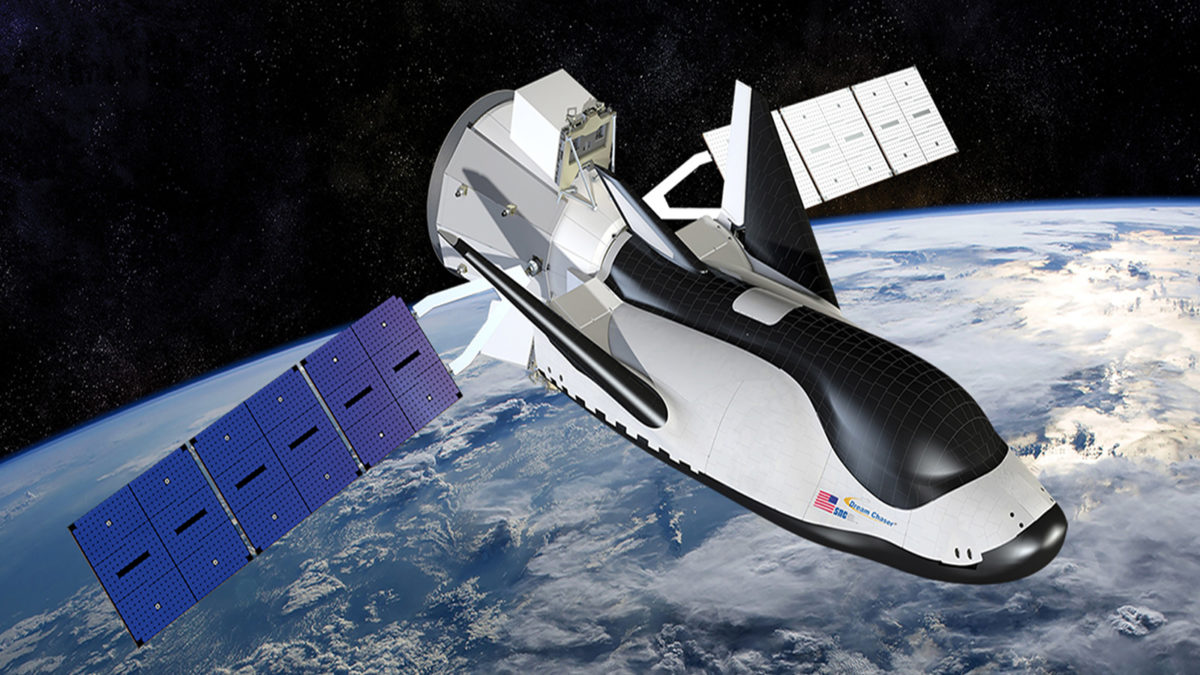Here’s what’s next for Dream Chaser
By Amanda Miller|August 16, 2019
With rocket decision made, attention turns to construction of first cargo version of the design
Now that Sierra Nevada Corp. has settled on Vulcan Centaur rockets to launch the company’s Dream Chaser spacecraft, focus is shifting to assembly of the first Dream Chaser that will go to orbit.
SNC announced Aug. 14 that it has hired United Launch Alliance of Colorado and Alabama to launch six Dream Chaser cargo missions to the International Space Station. The craft will be launched on ULA’s forthcoming Vulcan Centaurs starting in late 2021. Neither company disclosed the contract amount.
ULA’s CEO Salvatore “Tory” Bruno said during the event at SNC’s Space Systems facility in Colorado that he expects the first Dream Chaser flight to be the second for the Vulcan Centaur design that eventually will replace the company’s Atlas 5 and Delta 4 models.
Meanwhile, SNC staff in Colorado have been finalizing manufacturing drawings, readying tools, and going over some of the instruments for the first of two cargo Dream Chasers. Each could be flown a minimum of 15 times and will land on a runway, assuring a softer touchdown for science experiments than would be possible in a capsule.
The instruments include the on-orbit GPS receivers and the radar altimeters necessary for autonomous runway landings. Testing has also been conducted on SNC’s newly constructed mission control room, said SNC’s John Curry, the program director for the six cargo missions.
Next, Curry and his staff are looking ahead to the October delivery from Lockheed Martin in Fort Worth, Texas, of the main body assembly for the first cargo Dream Chaser. Applied Composites in San Diego is close to shipping the disposable cargo container for the craft’s 2021 inaugural mission.
If all goes as planned, “that’s both of the major elements of the core of the spacecraft here, in house, before the end of the year,” said Curry.
Despite being passed over in 2014 for NASA’s Commercial Crew contracts, SNC also hopes to build a crew version for trips to the space station or to an orbiting spacecraft that would ferry passengers to the moon.
Curry doesn’t think building a crew Dream Chaser would take very long. “We would have to put the abort system back in, and we’d have to put the seats back in, and we’d have to man-rate it and put the emergency detection system back in,” Curry said. “But the capability is there. We’re more than happy to do it whether it’s for NASA or somebody else.”
The crew version would ascend unshrouded on top of a rocket to be decided, so that the people inside could escape in a launch emergency. The cargo version, on the other hand, fits with wings folded inside the Vulcan Centaur’s 5.4-meter payload fairing.
The company feels good about Dream Chaser’s design because of two low-altitude flights with a prototype that’s now parked in the lobby of the Space Systems facility. In the 2013 test, the vehicle was released from a helicopter and glided to the runway at Edwards Air Force Base, California, where one of its two landing gears deployed too late, sending the vehicle skidding down the runway. The landing gear was an off-the-shelf variety just for purposes of the test, and the accident did not deter NASA from choosing SNC and SpaceX to receive an undisclosed share of $14 billion budgeted for cargo deliveries to the space station. The same vehicle landed normally in the second flight test in 2017.
Workers at SNC’s factory in Madison, Wisconsin, are building Dream Chaser’s 26 hydrogen peroxide and RP-1 reaction control thrusters for steering through space. There will be 20 for the vehicle itself and six for the disposable container.
As soon as Lockheed Martin completes the main body assembly, production will start on the second Dream Chaser, Curry said. For that vehicle, he’s considering adding more powered ports to accommodate additional science experiments. He wants the second vehicle finished by the first quarter of 2023 for redundancy to assure that SNC can fulfill the obligation of six missions by the end of 2024.
Curry, a former space shuttle and ISS flight director for NASA, said Dream Chaser is a natural choice to ferry cargo — and someday people — to Earth orbit and then to the moon by docking with a transport spacecraft.





